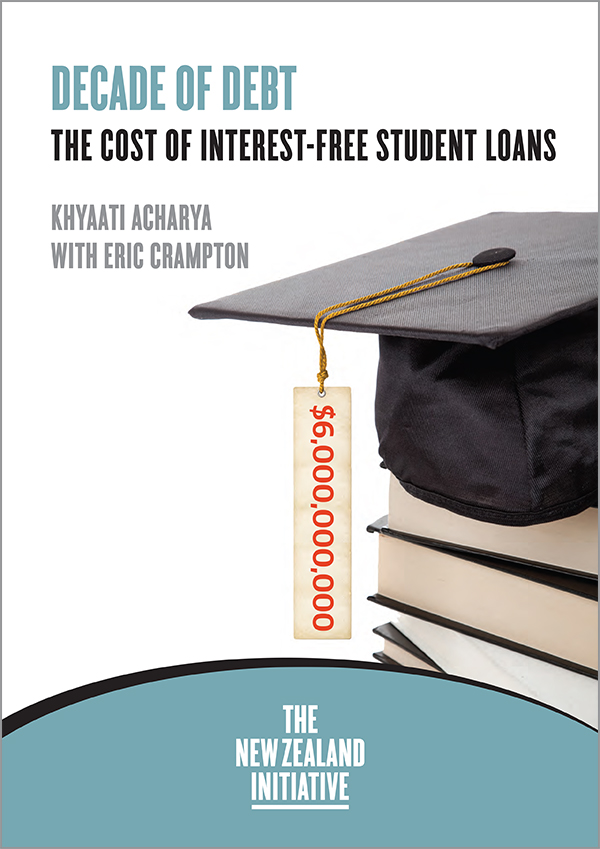Just over a decade ago, the government stopped charging interest on student loans. Before 2006, student loan debt drew interest after the borrower left school. The Labour-led government argued that loan repayment times were burdensome for too many graduates. And so, from 2006, student loan debt would carry no interest until the loan was repaid.
A decade on, the policy has proven rather expensive with no substantial benefits.
Removing interest payments from existing student loans cost the government over $1.4 billion in 2006, and the costs have mounted since then. And despite the rather high cost, the programme has not proven particularly effective at achieving its stated goals of making tertiary education more accessible for everybody – no matter their background.
But why do student loans exist?
Ensuring equitable access to a tertiary education is essential for any free, fair and prosperous society. But tertiary education has costs, and students are usually of modest means and limited credit history. Obtaining a loan through the private market to pay for these costs, without any tangible collateral or family wealth is often not an option. A universal, government-backed student loan scheme, combined with financial assistance for living expenses, goes some way to promoting fair access to tertiary education. And so the New Zealand government introduced the Student Loan Scheme Act 1992 to better enable students and their families to pay for the costs of tertiary education. The scheme remained largely unchanged for almost a decade.
However, after winning the 1999 general election, the Fifth Labour Government pledged to cut the costs for tertiary students by introducing a fairer loans scheme. During the 1990s, annual fee increases had been subject to the discretion of tertiary education providers. To help alleviate the costs of tertiary education, government introduced a temporary tuition fee freeze in tandem with removing all interest charges on loans during the study period.
But the big policy move came in 2005, when the government kept its campaign promise by extending interest-free student loans to all student loan borrowers residing in New Zealand.
But how effective is the current interest-free student loan scheme, and is it really fair?
Eliminating interest-charges on all student loans was a superb decision in political expediency; politicians compete for votes and people will naturally vote for policies that most benefit themselves. Lowering or deferring the financial burden of tertiary education gains the vote of many tertiary students – and the votes of their parents. But it has not improved access to university. The policy is best described as a costly failure.
Key Facts:
- Despite tuition increases, subsidies provided by the interest-free loan system mean students bear less than 20% of the cost of their education.
- While government-backed student loan schemes are common around the world, loans elsewhere typically carry interest charges. It is entirely possible to run an equitable student loan system while charging interest.
- Students borrowed $1.5 billion in 2014/15 through the interest-free loan scheme. The government immediately wrote $602 million off the value of those loans due to the subsidies provided through the scheme. Since 2005, write-downs on new lending have totalled almost $6 billion dollars.
- Reinstating interest on student loans would neither make education unaffordable nor result in substantial increases in repayment times. A student leaving university with $16,000 in student loans would take about an extra year to pay off her student debt if interest rates were 7% rather than zero percent.
The interest-free student loan scheme is simply not fit for purpose. This report finds that there is no compelling public policy case for universal subsidised student loans. The scheme has, to date, resulted in almost $6 billion taxpayers’ dollars being written off. Interest-free student loans are costly and ill-targeted. It is a policy that has had no major impact on tertiary participation rates, nor has it led to any conceivable improvement in tertiary equity.
The report recommends restoring interest on student loans, providing better targeted financial aid for students, and redirecting funding towards programmes in secondary schools to remove the real barriers to tertiary participation.




